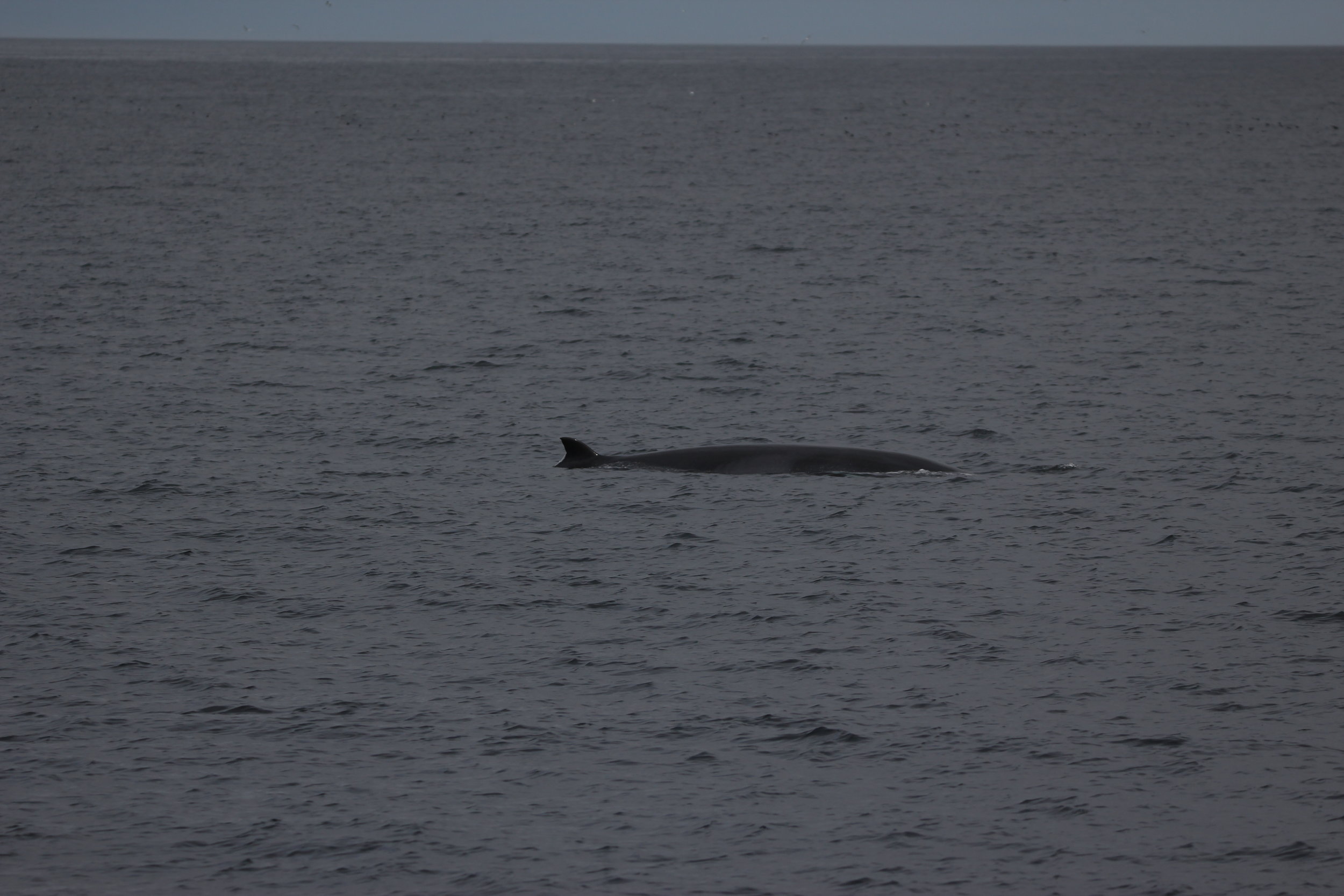*PRESS RELEASE * 'Knobble’ the Minke Whale Visits Hebridean Waters for 13th Year in a Row!
A minke whale known as Knobble has returned to Scotland’s west coast for the 13th year in a row, highlighting the area’s importance for marine wildlife.
Following the whale’s sighting on 28th July north of Coll by Sea Life Surveys, scientists at the conservation charity, Hebridean Whale and Dolphin Trust, say that Knobble has now returned to the same feeding grounds in the Sea of the Hebrides every year since 2006.
“Minke whales, like Knobble, migrate to feed in the rich waters off Scotland’s west coast during the summer months. We are all delighted to welcome Knobble to the Hebrides once more! Knobble’s recent sighting from Sea Life Surveys really highlights how crucial their sightings data is in helping us monitor the movements of individual animals year after year. Most of what we know of Knobble is thanks to their dedicated crew who track all their excursions on our Whale Track app and take photographs that are used to identify individual animals.”
Knobble was spotted by Hebridean Whale and Dolphin Trust’s partners Sea Life Surveys, which runs whale-watching trips from Tobermory on the Isle of Mull. Sea Life Survey’s contribution to the trust’s ongoing research has been critical in helping it learn much more about animals like Knobble.
Knobble the minke whale, spotted by Andy Tait on board Sea Life Surveys
Knobble, who has now been reported to the Hebridean Whale and Dolphin Trust a total of 49 times, and who was first photographed in the area in 2002, is a favourite with the locals, and the whale even has its own Facebook page and song.
“We’re really excited to see Knobble for the thirteenth year in a row! This highlights the importance of local collaboration and how much can be learnt about the rich biodiversity right here in our waters.”
Knobble’s star appearance has coincided with National Whale and Dolphin Watch week – an annual event run by Hebridean Whale and Dolphin Trust’s conservation partners, Sea Watch Foundation. During the nine-day event, which runs until Sunday 5th August, land-based watches take place all across the country organised by Sea Watch Foundation regional coordinators, including the trust. The event increases public awareness of cetaceans around the UK providing a snapshot of their distribution to highlight the need for continued research and conservation into these fascinating species.
“So far, just five days in, eight different species of cetacean have been recorded during the 2018 event, including humpback whales and killer whales!
Knobble’s sighting, as well as the many others which have been reported in the past around Scotland, illustrates the importance of collaboration between Hebridean Whale and Dolphin Trust and Sea Watch, with citizen scientists and boat operators. Sightings like this contribute towards the knowledge base for researchers, local communities and dolphin watching operators in the area.”
Headland watch from Ardnamurchan Lighthouse run by Hebridean Whale Trail Officer Siobhan Moran for National Whale and Dolphin Watch week
In the Hebrides, the trust has been collecting data on cetaceans, the collective name for whales, dolphins and porpoises, for 15 years. Photo-identification research conducted on the charity’s dedicated research vessel Silurian and through its Community Sightings Network over this time has catalogued 235 individual minke whales. This makes it possible to know when the same individuals reappear each year.
Photo-identification is a non-invasive research method, which uses photographs to capture natural markings or features on the animals’ body to aid individual recognition.
Photo identification is carried out by our crew with specialised cameras. Copyright WWF UK Anthony Dickenson
Each year, northern minke whales join the tourists in flocking to the Scottish west coast, and can be seen in many coastal areas between April and October with the occasional sighting in the winter.
Public sightings can help strengthen our understanding of Scotland’s cetaceans and there is still much to be discovered, such as where Knobble goes in the winter months, or even Knobble’s gender. Sightings recorded within the Sea of the Hebrides are particularly important, as the site is a proposed nature conservation Marine Protected Area (MPA) for minke whales, which will be going to public consultation later this year.
People wanting to help Hebridean Whale and Dolphin Trust spot seasonal visitors such as Knobble can send sightings and photographs through the charity’s Whale Track community sightings app and website. The Whale Track app is free to use and available on Android and Apple phones, allowing people to submit sightings at the touch of a button.
Paying volunteers can also join the trust on board its research vessel Silurian as a citizen scientist helping to survey the spectacular marine life in the Hebrides, contributing towards the largest research effort of its kind in UK waters.
It’s also possible to keep up to date with Knobble by sponsoring the whale through Hebridean Whale and Dolphin Trust from just £4 a month. For details see https://hwdt.org/join-support-2




